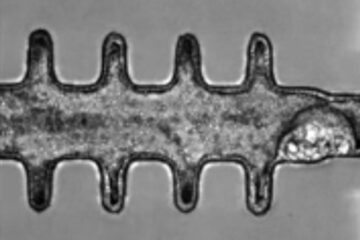Toward resolving Darwin's 'abominable mystery'

What, in nature, drives the incredible diversity of flowers? This question has sparked debate since Darwin described flower diversification as an 'abominable mystery.' The answer has become a lot clearer, according to scientists at the University of Calgary whose research on the subject is published today in the on-line edition of the journal Ecology Letters.
Drs. Jana Vamosi and Steven Vamosi of the Department of Biological Sciences have found through extensive statistical analysis that the size of the geographical area is the most important factor when it comes to biodiversity of a particular flowering plant family.
The researchers were looking at the underlying forces at work spurring diversity — such as why there could be 22,000 varieties of some families of flowers, orchids for example, while there could be only forty species of others, like the buffaloberry family. In other words, what factors have produced today's biodiversity?
“Our research found that the most important factor is available area. The number of species in a lineage is most keenly determined by the size of the continent (or continents) that it occupies,” says Jana Vamosi.
Steven Vamosi adds that while the findings of this research mostly shed light on what produces the world's diversity, it may comment on what produces extinction patterns as well.
“The next step is to determine if patterns of extinction risk mirror those observed for diversification, specifically to contrast the relative influence of available area and traits,” he says.
Typically, when it comes to explaining the biodiversity of flowering plants, biologists' opinions fall into three different camps: family traits (for example a showy flower versus a plain flower), environment (tropic versus arid climate) or sheer luck in geography (a seed makes it way to a new continent and expands the geographical range of a family).
But the Vamosi research demonstrates that geography isn't the only answer, traits of the family came in a close second to geography. Traits that may encourage greater diversity are known as “key innovations” and scientists have hypothesized that some families possess more species because they are herbs, possess fleshy fruits (such as an apple or peach), or that their flowers have a more complex morphology. Zygomorphy (or when a flower can only be divided down the middle to make two equal mirror images) is thought to restrict the types of pollinators that can take nectar and pollen from the flower. Flies, for instance, won't often visit zygomorphic flowers. Bees, on the other hand, adore them.
“Although geography may play a primary role, a close second is the flower morphology of the plants in a particular family,” says Jana Vamosi. “So essentially all camps may claim partial victory because morphological traits should be considered in the context of geographical area.”
Media Contact
More Information:
http://www.ucalgary.caAll latest news from the category: Life Sciences and Chemistry
Articles and reports from the Life Sciences and chemistry area deal with applied and basic research into modern biology, chemistry and human medicine.
Valuable information can be found on a range of life sciences fields including bacteriology, biochemistry, bionics, bioinformatics, biophysics, biotechnology, genetics, geobotany, human biology, marine biology, microbiology, molecular biology, cellular biology, zoology, bioinorganic chemistry, microchemistry and environmental chemistry.
Newest articles

Solving the riddle of the sphingolipids in coronary artery disease
Weill Cornell Medicine investigators have uncovered a way to unleash in blood vessels the protective effects of a type of fat-related molecule known as a sphingolipid, suggesting a promising new…

Rocks with the oldest evidence yet of Earth’s magnetic field
The 3.7 billion-year-old rocks may extend the magnetic field’s age by 200 million years. Geologists at MIT and Oxford University have uncovered ancient rocks in Greenland that bear the oldest…

Mini-colons revolutionize colorectal cancer research
As our battle against cancer rages on, the quest for more sophisticated and realistic models to study tumor development has never been more critical. Until now, research has relied on…





















